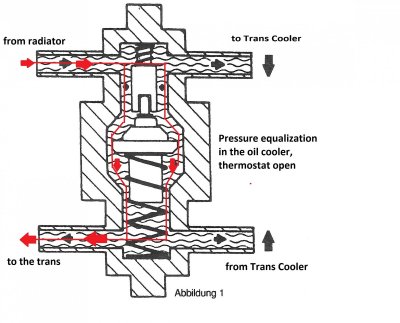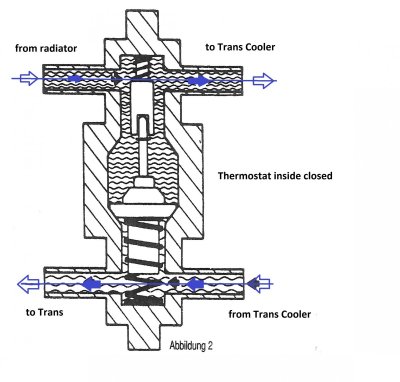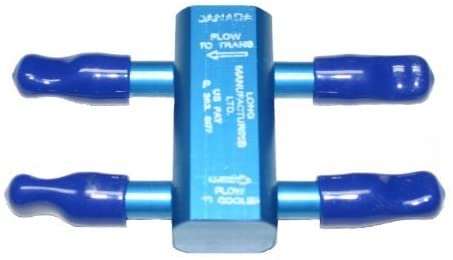I’m not a trans expert by any means but I doubt the TPS or TB would be causing any shifting issues like you’re experiencing. You can always take it in to a trans shop and get an opinion.Thanks Rocket Man.
Another question for you... as I was driving tonight I noticed the rough 1-2 shift and flare were somewhat inconsistent. The flare would be a 500-750 rpm jump at certain throttle inputs and then 250 at others. I also did a WOT pull and didn't notice any shift hesitation and got up to about 70MPH.
Before I go ripping the trans out, I'm wondering if the TPS or throttle body itself may be causing these issues?
You are using an out of date browser. It may not display this or other websites correctly.
You should upgrade or use an alternative browser.
You should upgrade or use an alternative browser.
Replacing Transmission Checklist
- Thread starter dwinters14
- Start date
Disclaimer: Links on this page pointing to Amazon, eBay and other sites may include affiliate code. If you click them and make a purchase, we may earn a small commission.
Bandit-66
Member
- Joined
- Aug 23, 2020
- Posts
- 53
- Reaction score
- 85
Actually, the oil goes through the radiator first where it heats up along with the engine coolant. There’s a coil inside the factory radiator that’s bathed by the engine coolant. I’d like to know how you would determine if you’re doing harm. Anyway, adding a thermostat isn’t suggested over here unless you’re in the frigid north where it’s frozen for a good part of the winter. Be careful suggesting people do something that may actually shorten the life of their transmission which is the case in the newer vehicles with the factory thermostat, where owners here are deleting them instead of adding them. Here’s a YouTube video that explains the reasoning.
Sorry, I think we have misunderstood something.
The Racimex thermostat does not stop the oil flow, like in your video of the 6L80E, but changes the way the oil flows.
I have created 2 pictures and in picture 1 you can see how the oil flows (red line) when the temperature of the oil is below 167F.
Figure 2 shows the path of the oil (blue line) when the temperature is above 176F.
When the cone valve is open ( picture 1 ), the oil presses through both supply lines to the radiator. Pressure and back pressure cancel each other out and the pressure equalization stops the oil flow through the Trans cooler. The Trans cooler is thus neutralized and the oil flows back to the Trans inside the thermostat.
At 167F the cone valve starts to close and interrupts this standstill. At approx. 176F the cone valve is closed (Fig. 2) and the oil must now flow via the trans cooler back to the trans.
When connecting the hoses, make sure that the radiator/trans hoses are mounted on one side of the thermostat and the hoses to the trans cooler on the other side.
This thermostat is not intended for cold areas, but to protect the trans from overheating when driving with a trailer in warm weather and under load.
And these are our experiences that we made here in Germany and whether this is an option for you, I cannot and do not want to decide, it should only serve as a suggestion how to realize it.


Bandit-66
Member
- Joined
- Aug 23, 2020
- Posts
- 53
- Reaction score
- 85
Who is we? Are there that many 4L60s running around in Germany?
There are already a lot of people here who drive a reasonable V8, whether GM, Dogde or Ford.
In our Chevy Forum we are about 2500 members and there is everything from GM represented, no matter what year of construction and there are a lot of 4L60E and also Th700R4, which is almost identical, only that it does not work with an ECU but the Governor and the Detent Cable takes over the work.
No, I understand. Tru- Cool sells the same thing. It’s intended for cold climates only. We run without a thermostat over here for most of the country.Sorry, I think we have misunderstood something.
The Racimex thermostat does not stop the oil flow, like in your video of the 6L80E, but changes the way the oil flows.
I have created 2 pictures and in picture 1 you can see how the oil flows (red line) when the temperature of the oil is below 167F.
Figure 2 shows the path of the oil (blue line) when the temperature is above 176F.
When the cone valve is open ( picture 1 ), the oil presses through both supply lines to the radiator. Pressure and back pressure cancel each other out and the pressure equalization stops the oil flow through the Trans cooler. The Trans cooler is thus neutralized and the oil flows back to the Trans inside the thermostat.
At 167F the cone valve starts to close and interrupts this standstill. At approx. 176F the cone valve is closed (Fig. 2) and the oil must now flow via the trans cooler back to the trans.
When connecting the hoses, make sure that the radiator/trans hoses are mounted on one side of the thermostat and the hoses to the trans cooler on the other side.
This thermostat is not intended for cold areas, but to protect the trans from overheating when driving with a trailer in warm weather and under load.
And these are our experiences that we made here in Germany and whether this is an option for you, I cannot and do not want to decide, it should only serve as a suggestion how to realize it.
View attachment 259149
View attachment 259150

Similar threads
- Replies
- 8
- Views
- 2K
- Replies
- 22
- Views
- 1K
